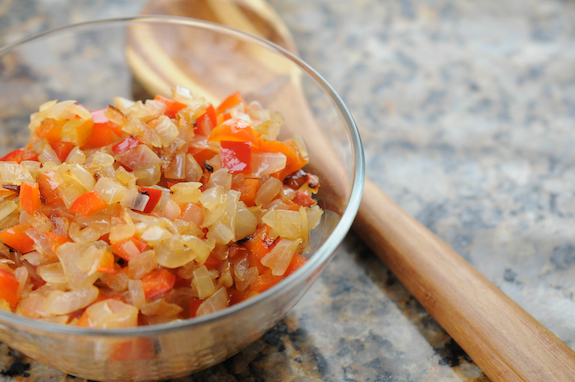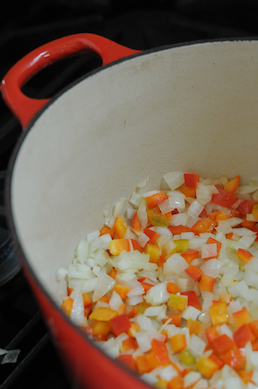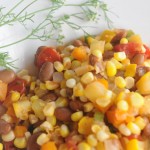Sweat the Small Stuff
 Over the past few months, I’ve written a few recipes that call for the cook to “sweat” the aromatics. I don’t mean perspiring over a hot pan into your food.
Over the past few months, I’ve written a few recipes that call for the cook to “sweat” the aromatics. I don’t mean perspiring over a hot pan into your food.
“Sweating” is a technique for cooking aromatics. Aromatics are ingredients whose purpose it is to create flavor upon which a dish can be built. With French cooking, those aromatics are often some form of mirepoix. For Italian, it’s a soffrito.
There are basically two ways you can handle aromatics. The first way is to cook them over medium-high heat, creating a little Maillard goodness in the process: basically, just a sauté. This technique creates lots of delicious new flavor compounds that impart richness to the finished dish.
The second way is to sweat them. This creates soft, tender vegetables with a sweeter, more gentle flavor profile.
To properly sweat aromatics, add a bit of oil to the pan and turn it on to low heat. I have a bias towards cast iron for sweating because of its super-even heat distribution. Add your vegetables. Keep an eye on them for the first few minutes to be certain you’ve got your heat right. You don’t want to hear sizzling. Better to start with the temperature too low than too high. The right temperature for sweating is the one at which you could seemingly walk away to change a toddler and then help a kid with his math homework and have nothing brown or burn. When I’m sure of my temperature, I usually cover my pan. Retaining the natural water of the vegetables helps prevent browning.
Sweating takes a while. I’d say 12 minutes or more. Be patient and finish prepping something else or set the table.
So which technique to use? There really is no right or wrong answer most of the time. Last week, I was making tortellini and wanted to serve it with a marinara with a vegetal quality. So I finely chopped some onion, carrot, celery and bell pepper, added some pasted garlic, and sweated them. Why’d I choose sweating over sautéing? I wanted the vegetables to have an almost “melted-in” quality when combined with the marinara. I also didn’t want the more assertive Maillard flavors competing with the delicacy of the marinara. Finally, the sautéed aromatics would have imbued a caramel color that would have darkened the marinara.
Would the dish have been just as good had I sauteed the aromatics? Probably. It just would have been different. It’s a mood thing. Do you want to wear your designer skinny jeans or a pair of tailored slacks today?
Sweaty Recipes






